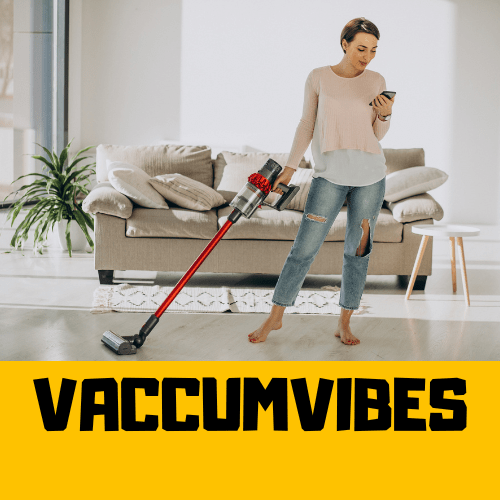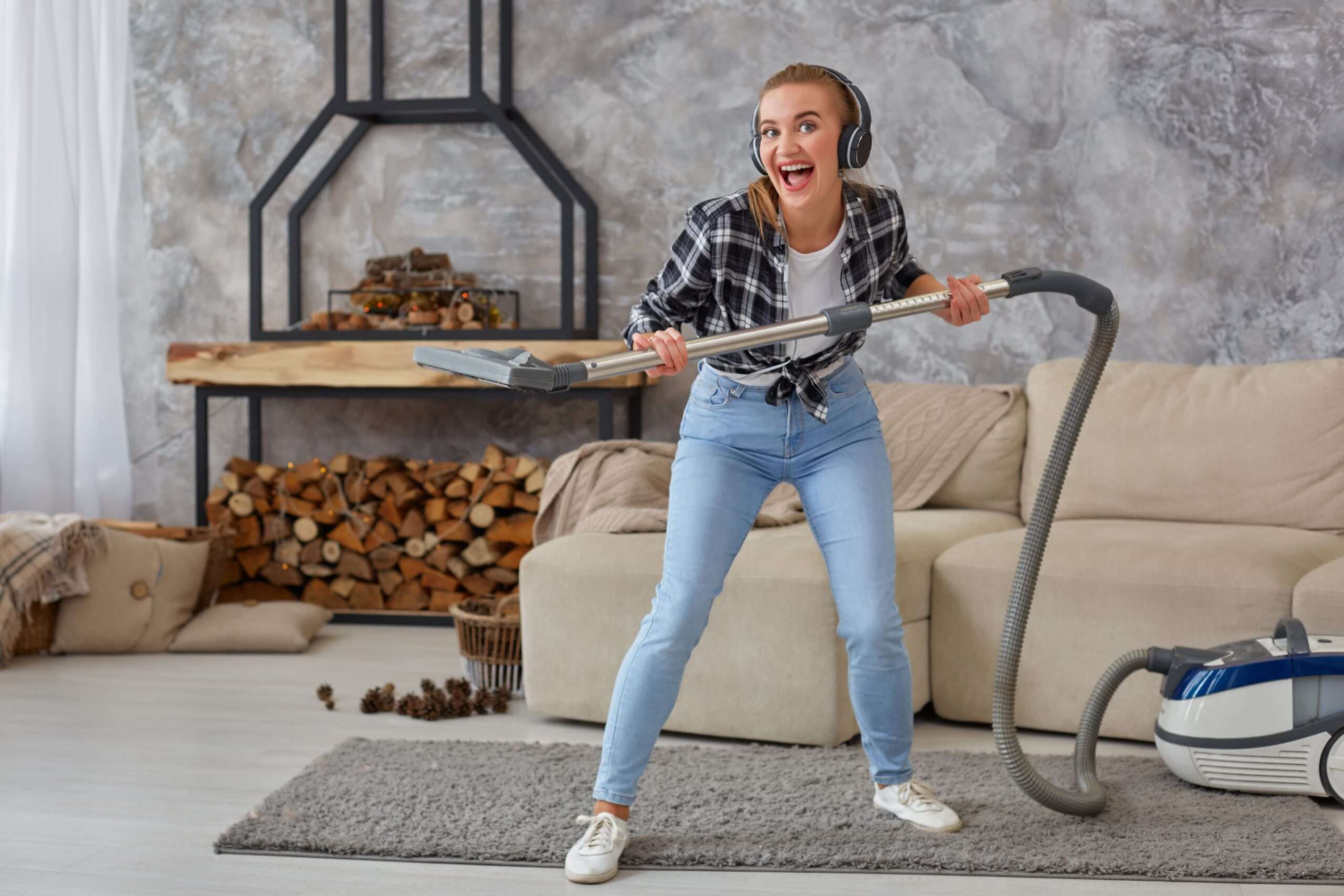
The American Time Use Survey reporting that women with children under 18 years devote 1.2 hours per day to household cleaning has generated demand for quick vacuuming tips worldwide. Modern homeowners and cleaning enthusiasts need to juggle work commitments and childcare duties, finding comprehensive vacuum cleaning sessions challenging.
The Research and Markets predicted that the global household vacuum cleaner market will touch $14.5 billion in 2020 and will cross $19.7 billion by 2025. On one hand, a clean, refreshing, and appealing living room preserves respiratory health by reducing allergens, pathogens, and pet hair exposure and contributes to mental well-being by creating a peaceful and organized living space. Delve into effective and quick vacuuming tips with this article and learn practical tips to streamline the vacuum cleaning process, to get a spotless home with minimal effort.
Table of Contents
Quick Vacuuming Tips-Choose the Right Vacuum Cleaner
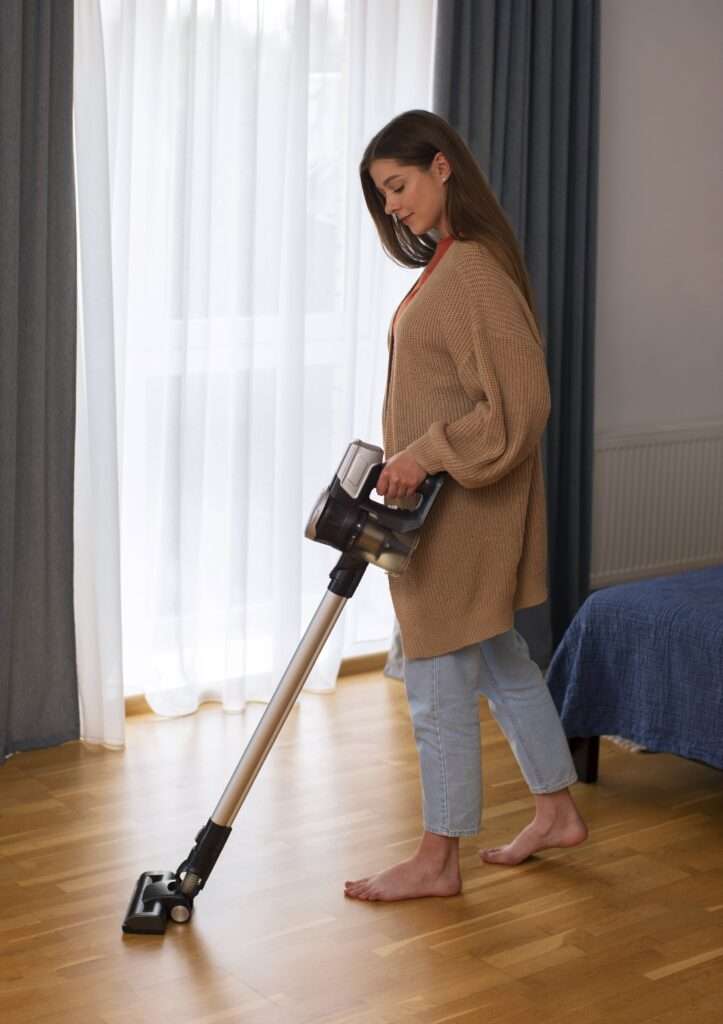
When investing in a vacuum cleaner, opt for one that aligns with your specific cleaning needs such as pet ownership, flooring type, and the presence of asthma or dust allergies. The American Cleaning Institute reported that in one of their surveys, 57% of respondents reported buying a vacuum cleaner specifically engineered for pet hair and odor removal. You should consider that bagless vacuum cleaner models are cost-effective and add to users’ convenience in the long run.
In contrast, bagged vacuum cleaner models cater to the cleaning needs of allergy sufferers as they are engineered to trap and retain dust and allergens more effectively. Statistics have hinted that the demand for robot vacuum cleaners is escalating and Grand View Research stated that the global robot vacuum cleaner market size was valued at $2.6 billion in 2020 and is expected to cross $6.5 billion by 2027.
Establish a Vacuuming Schedule
To incorporate consistency in your vacuum cleaning sessions for a clean and germ-free living room, set a regular vacuuming schedule based on your daily lifestyle, availability, and household traffic patterns. The Environmental Protection Agency (EPA) suggests that modern homeowners should conduct regular vacuuming to regulate indoor allergens by up to 90%, to purify indoor air and safeguard respiratory health.
Consider vacuuming high-traffic areas at least twice a week and less frequented areas once a week to hinder dirt and allergen buildup. The American Lung Association found that consistent vacuuming sessions kill airborne allergens by 85%. To enjoy vacuuming sessions you can exercise lightly, listen to podcasts, or catch up on phone calls with friends to maximize productivity.
Pre-Vacuuming Preparation
To conduct an effective vacuum cleaning session, first, consider decluttering the living room surface and removing small objects from the floor to prevent damage to the vacuum cleaner, and don’t neglect to invest in attachments such as upholstery brushes and crevice tools for effectively cleaning hard-to-reach areas and beneath the sofas.
The National Sanitation Foundation (NSF) in one of their surveys mentioned that 40% of respondents admitted that they have never or rarely vacuumed under the furniture hinting towards the necessity of utilizing attachments for comprehensive cleaning sessions.
Master Vacuuming Techniques
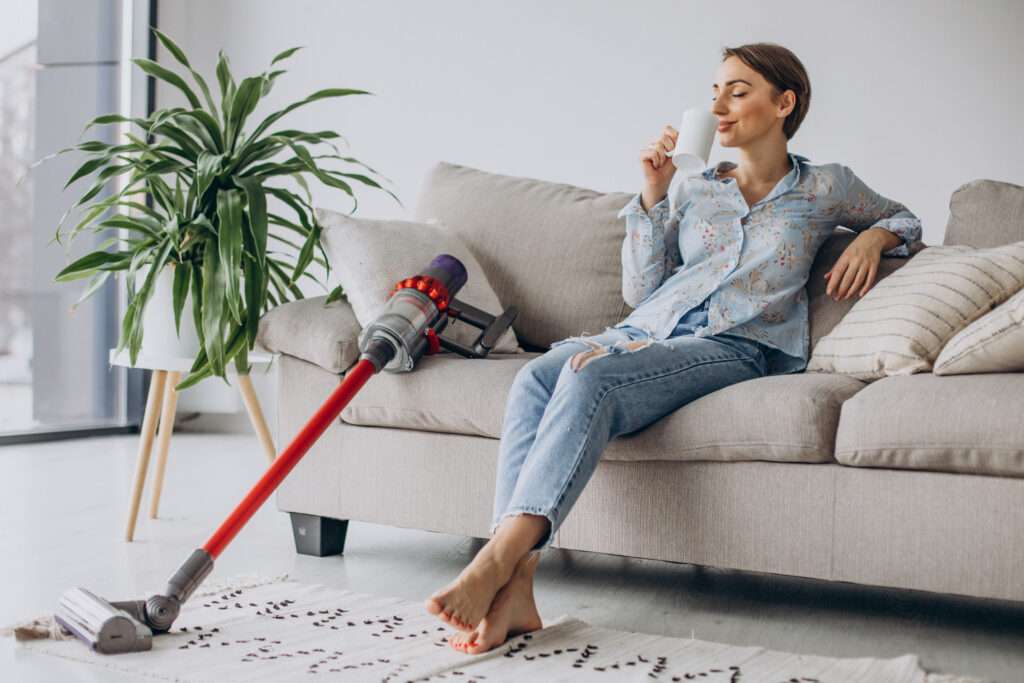
Suppose you are eager to know quick vacuuming tips. In that case, you need to master vacuuming techniques like using deliberate and slow strokes to assist the vacuum cleaner in lifting dirt and embedded grime from mattresses and carpets effectively. Always focus on adjusting the vacuum cleaner’s height according to the types of flooring of your living room or commercial space-like for carpets adjust the vacuum lower to reach deep into the fibers and for hardwood floors raise it slightly to avoid floor damage like scratching.
If your living room contains extensive carpeted areas then the quick vacuuming tip is that you should change vacuuming direction occasionally to agitate carpet fibers and dislodge embedded dirt. You can start vacuuming the perimeter of your living room before moving toward the center in overlapping rows.
The Journal of Occupational and Environmental Hygiene found that when the user is vacuuming at a slower pace he noticed significantly cleaner carpets compared to faster vacuuming speeds. The National Institute of Standards and Technology has reported that slower vacuuming effectively eliminates 30% more dust, debris, and embedded grime than rapid passes.
Address Specific Cleaning Challenges
If you have furry companions in your home, always purchase a vacuum cleaner with customized pet hair attachments or you can also use a soft rubber bristle brush to dislodge pet hair from mattresses and carpets. To address stubborn stains or pet odors, prepare the area by sprinkling baking soda or using carpet cleaner before vacuuming to loosen up the embedded dirt and neutralize odors. Also, you need to take care of the high-traffic areas coupled with entryways as they attract more dirt and dust. You can also use a doormat to minimize the degree of dirt and debris entering the home.
Maintain Your Vacuum Cleaner
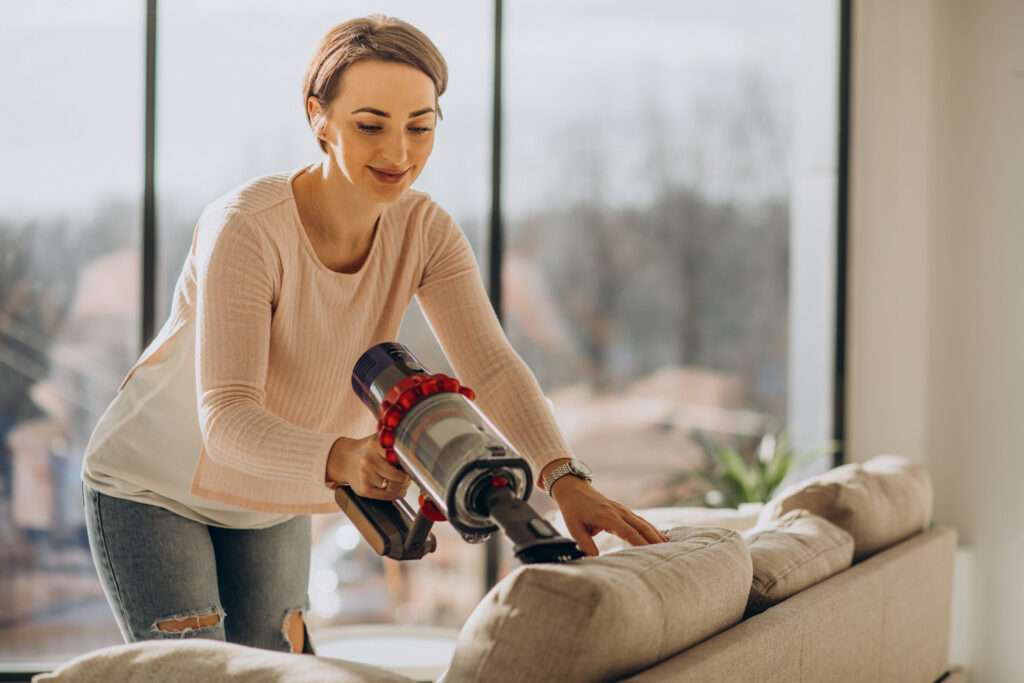
Regular maintenance of the vacuum cleaner abiding by the manufacturer’s instructions is essential for optimal vacuum performance and ensuring its long life. Clean or replace filters according to the manufacturer’s recommendations to prevent clogs and maintain suction power. Also, you need to keep an eye on the vacuum cleaner’s brush roll for detecting and removing any tangled hair and small debris and remove any obstructions to ensure smooth operation.
Consumer Reports has reported that well-maintained vacuum cleaners that are taken care of regularly and professionally have a significantly longer lifespan compared to those that are neglected, highlighting the importance of routine maintenance.
Don’t Forget About Hard Floors
Vacuuming different types of hard floors is just as crucial as extensive carpeted areas of your living room and while vacuuming use adjustable settings or a hard floor attachment to prevent any potential damage like scratching. You can use a dry mop or sweep to eliminate all sorts of larger debris before vacuuming sessions to hinder clog development and ensure comprehensive and effective cleaning.
The National Wood Flooring Association in one of their surveys reported that 52% of respondents never vacuumed hard floors. Thus modern homeowners need to be increasingly aware of hard floor maintenance.
Conclusion
When you master the art of quick and effective vacuuming you can enjoy a clean and healthy home environment with minimal effort and without any hassle in your busy professional lives. By establishing a regular cleaning schedule, choosing the right vacuum cleaner, utilizing proper techniques, and addressing specific cleaning challenges in association with consistent effort and attention to detail, you can enjoy a cleaner, more comfortable living space for you and your family.
Also, regular maintenance of the vacuum cleaner abiding by the manufacturer’s instructions is essential for optimal vacuum performance and ensuring its long life. You need to take care of the high-traffic areas coupled with entryways as they attract more dirt and dust and remember slower vacuuming effectively eliminates 30% more dust, debris, and embedded grime than rapid passes.
FAQs
How do I increase suction in my vacuum?
To get optimum performance and suction from your vacuum, ensure filters are cleaned or replaced regularly, empty the dustbin regularly, and keep an eye on attachments and hoses for detecting potential blockages. If you are not a budget-conscious customer then opt for a vacuum cleaner equipped with a higher airwatt rating for the highest level of suction power which is around 100-200 airwatt for a typical household vacuum while industrial vacuum cleaner models can reach 2000+ airwatt suction.
Is it better to vacuum fast or slow?
Always consider vacuuming at a moderate pace or steady speed to obtain better cleaning results and elimination of dust, pet hair, grime, dirt, debris than going too fast or too slow. Research shows that moving at a pace of about 1 meter per second ensures thorough and effective cleaning without compromising suction effectiveness.
How can I vacuum faster?
For vacuuming at a faster speed you should learn and apply efficient movement patterns. Long and overlapping strokes are effective for faster vacuuming and moving in straight lines rather than in random directions. You should also buy a vacuum cleaner model with a wider cleaning path of 12-15 inches to rapidly clean and sanitize greater surface areas in less time. Additionally, you can also opt for a lightweight model for added portability.

For the past five years, I’ve been engaged as an SEO content writer, specializing in crafting engaging blog posts. My focus lies in meticulously exploring and evaluating household cleaning appliances, particularly those integrated with cutting-edge and emerging technologies.
